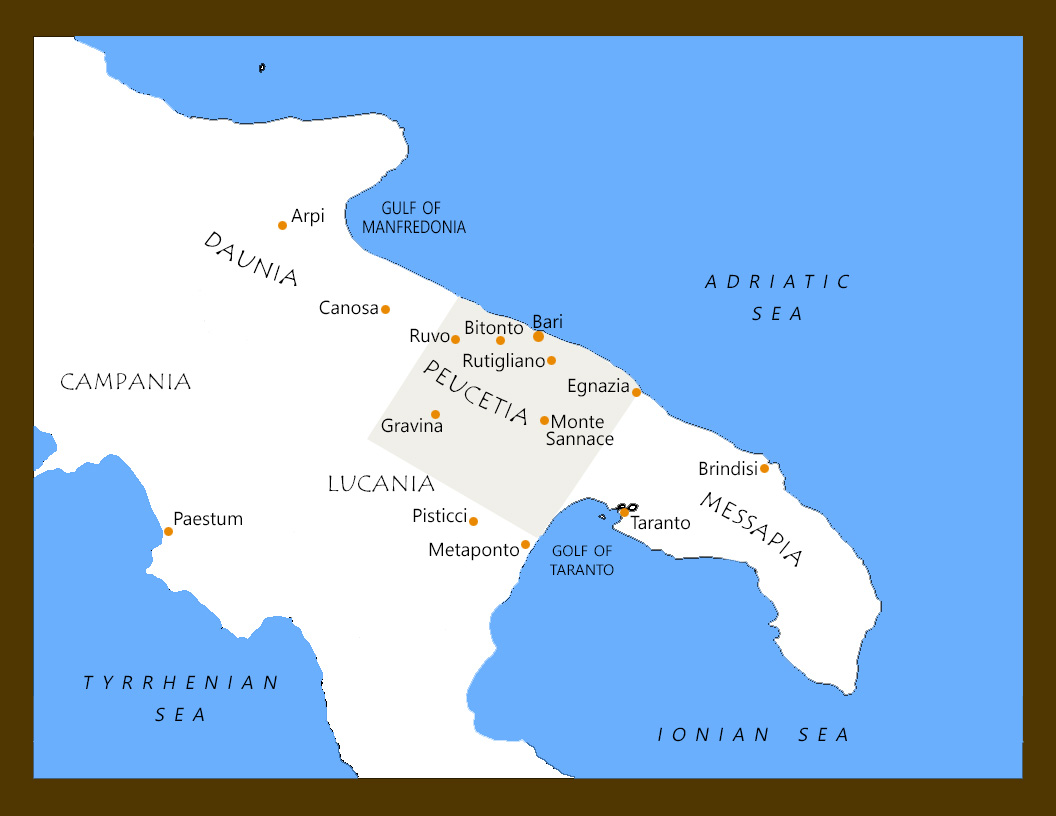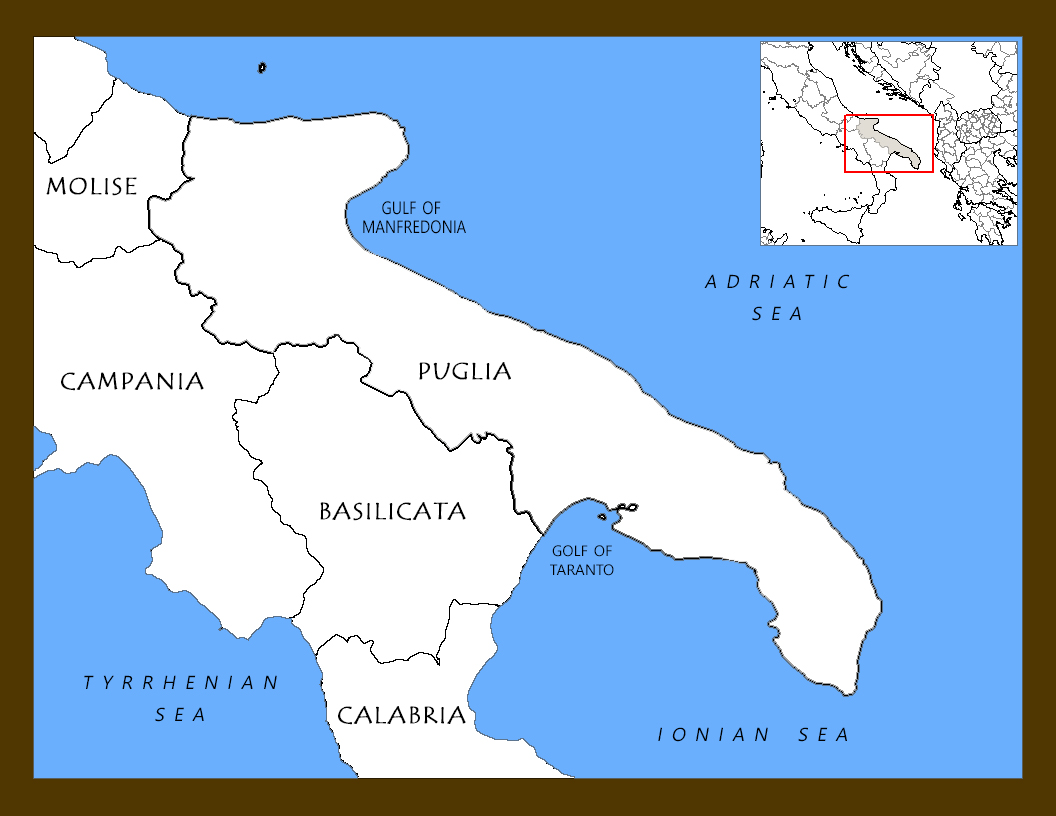Peucetia and Peucetians
Ancient Apulia corresponds to modern Puglia in southeastern Italy. The region comprises the Salentine Peninsula and extends north to the Gargano Promontory, where it shares a border with the region of Molise; at the southwest and west, it shares borders with Basilicata (Lucania) and Campania. The coastline borders the Adriatic Sea to the northeast and the Ionian Sea to the south. The original basis for the conception of ancient Apulia as a geographic entity was informed by the Greek sources, which referred to the region as Japygia, and its indigenous population as the Iapygians.These people are believed to have brought their culture to Apulia between the 12th and 10th centuries BCE, and on the basis of the archaeological evidence, over the course of the 8th century, to have evolved into three distinct cultures and population groups.[1] For example, at this time Apulian geometric pottery styles become regional, and identified with each of these cultures.[2] The sources name these sub-populations and locate them in geographic regions of Apulia: the Daunians, to the north, who inhabited the territory between Bari and the Ofanto River and further north, the Tavoliere valley; the Messapians, who inhabited the most southern part, the Salentine Peninsula to Egnazia; and the Peucetians, who inhabited the area in the middle: the central Murge plateau, between Egnazia and Bari (on the coast), and inland (to the west) to the Brandano River, the natural frontier between Apulia and Lucania. As mentioned, our loom weights come from the area to the east of the Murge valley, in eastern Bari Province.[3]
Notes
[1] De Juliis 2010, 151-159; De Juliis 1988; Yntema 1990,18-44; the linguistic evidence is disputed; the language of these people was known as Messapian, an Indo–European language not closely related to the other Italic languages spoken in Italy in Greek antiquity, but partly based on the Greek alphabet, and marked by affinities with the language of Illyria, from where the Japygians are traditionally believed to have immigrated, see Lombardo 2014, 36-48; De Simone 1989, 651–8; Santaro 1981, 292.
[2] See Yntema 1990, 31-44, 197-219; De Juliis, 1995, 42-46, 54-55; Greiner 2003, 29-41.
[3] The use of the traditional ethnic labels for these populations is problematic since we do not know if they actually called themselves what the Greeks called them, and the sources are unclear about their geographic boundaries; see Greiner 2003, 15–24; Herring 2000, 45-77; 2007, 270-276; and Lomas 2000, 79-82, for the literary evidence for these population groups and the problems posed by these culture labels; Strabo (6.3.8) reports that they did not use these labels to define themselves, except in earlier times, which arguably may or may not suggest that they used them.



